An Overlooked Gem Off Brady Street
Built in 1891 by then-prominent architect Bernard Kolpaki, the home was restored and is now owned by a Whitefish Bay school principal.
This handsome 3,912 square foot, 2-story mixed-use building, located in the 1700 block of N. Franklin Place, a block off busy E. Brady St., was built as a meat market and residence for Michael Jozwiak and family in 1891.
Buildings like this brought vitality to the growing Polish community clustered in the shadow of the steeple of St. Hedwig’s Church, and in similar neighborhoods throughout the growing city. The store provided needed goods to the community, while the upstairs provided convenient living space for the family of the proprietor. Family members worked in the store to provide a living for themselves and the mortgage payment for the Savings and Loan.
At about the same time, Captain Frederick Pabst’s magnificent workingman’s tavern at the northeast corner of N. Astor and E. Brady streets was being built just a two blocks away. [Now Regano’s Roman Coin, 1004 E. Brady St.]. It, too, had living quarters above. Brady Street was bustling, but today’s City Hall had not yet been built.
The city has many such buildings as this one remaining, and they could provide great opportunities for early immigrants to Milwaukee to open a shop downstairs and live upstairs. Many more similar structures, particularly in the central city, remain boarded up, but many others have been brought to life, particularly in Bay View, the near South Side and the Silver City neighborhood, which is blossoming with new ethnic stores and restaurants.
Jozwiak could look out the window of his meat market and see the firehouse across the street; apparently its attaction was great (as was the size of his growing family) and he joined the department after just a year as a butcher here.
Different owners kept this place as a meat market until 1920, when a rug- cleaning business opened in its place. Then it became any number of retail businesses, including a grocery store, until 1972 when the entire structure was used for four residential apartments.
By that time, the building had lost much of its character. All windows were boarded up, somewhat crudely, covering much of the fine architectural detail of the building. (Brady Street was a far shabbier area during its counter-culture period; even the Pabst tavern was heavily plywooded for decades.)
Designed by Prominent Polish Architect
Kolpacki’s biggest assignment had come in 1893 when he was appointed supervising architect of the Federal Building in 1893. That Romanesque Revival masterpiece was designed by Willoughby J. Edbrooke. Edbrooke also designed the very similar Washington DC post office at 1100 Pennsylvania Ave. NW at about the same time.
Rough Times in the 1980s — The Giwosky Era
By the 1980s this shabby building on N. Franklin Pl. was owned by Daniel Giwosky, whose story should be retold. Giwosky specialized in purchasing distressed properties and keeping them that way. He was a man of short temper who was known to harass his tenants and engage in bizarre behavior.
After a business dispute with a person who had bought one of his buildings — a mixed-use store with 8 apartments above on N. Farwell Ave. — Giwosky got a strange revenge. He torched the building, which was occupied. Nobody was injured, but the building and the adjacent Century Hall tavern were destroyed on April 24th, 1988. Other buildings were damaged, including the Schaum Music School and what is now G-Daddy’s BBC tavern at 2022 E. North Ave.
Giwosky, although never named by authorities, was the only suspect in the case, and the ATF even held a rare press conference in the Federal Building in July announcing arson as the cause. Arson cases are notoriously difficult to prove, but the heat was definitely on Giwosky.
On September 16th, 1988, Giwosky’s wife was found battered to death at the bottom of the stairs of the family home at the northeast corner of N. Upper River and W. Brown Deer roads in River Hills.
Again, Giwosky was the only likely suspect, but evidence had not been fully developed, so he was free to go about his business. Giwosky attended his wife’s funeral, which was considered to be a socially maladroit move by many in attendance.
Two weeks later, Giwosky, who had been permitted to retain his firearms, grabbed a gun, walked next door to the driveway of the old Stratton Mansion just up Upper River Road, and shot himself dead, leaving behind orphaned children. Prosecutors stamped their files, “closed.”
A Happy Ending Expanded Residence Above 2015
Around the time of these tragic events, our subject building began a new life of its own. Architect Jeff Clausen bought the place and began the process of renovation, restoring the storefront and converting it into offices for his firm, which he called Ar’ke-tek-Cher, Inc.
The building also contained three apartments, with one downstairs in the back, and two upstairs, which had once been one unit.
In 2013, the building was bought by Mark Tenorio for $355,200. Beginning at the end of last year, and continuing to this day, significant changes are underway at the property. For one thing, a very ambitious and well-constructed garage, with an apparent party deck above, is being constructed at the rear of the deep lot. For another, the two apartments above are being merged into a single 1,952 square foot unit, while the storefront, while still not particularly active, now sports dozens of lovely origami cranes. According to city records, Tenorio, a school principal in Whitefish Bay, will be the owner-occupant of the upper unit.
Photo Gallery
The Rundown
- Location: City of Milwaukee
- Neighborhood:Lower East Side / Brady Street
- Subdivision: None
- Year Built: 1891, with a 1906 addition. Significant renovations c. 1989 and at present.
- Style: Queen Anne storefront with projecting second floor bay window..
- Size of unit: combined second floor apartment will have 1,952 square feet of living space.
- Fireplaces: Undetermined.
- Taxes: $9,007.40 for entire building, paid in full.
- Assessment: Land $205,400 [$24/s.f.], Improvements $95,600; Total: $301,000.
- Walk Score: 94 out of 100. “Walker’s Paradise” That it is. Four taverns on the block; hardware store, futon shop, former funeral home — and one of the nation’s finest organ builders. You’re set.
- Transit Score: 56 out of 100 “Good Transit” It is very likely that a streetcar line will run nearby once again.
How Milwaukee Is It? The residence is 1.5 very civilized miles from City Hall.
House Confidential Database
| Name | City | Assessment | Walk Score | Year |
|---|---|---|---|---|
| Name | City | Assessment | Walk Score | Year |


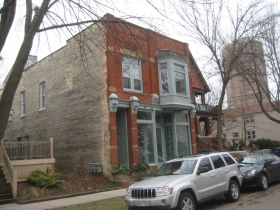
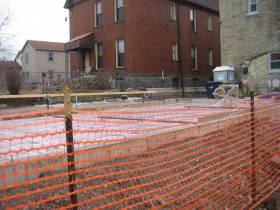
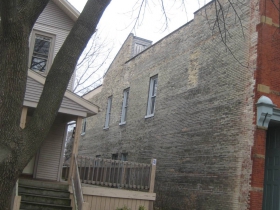
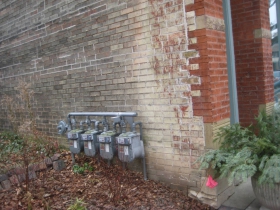
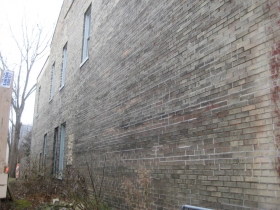
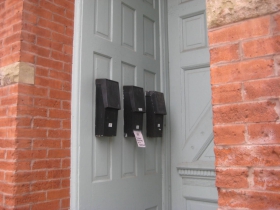


















That’s an odd coincidence because Giwosky’s daughter taught at a Whitefish Bay elementary school in the 90’s.
The article omitted that Gregory Stebbins co-owns the property with Mark Tenorio.
Great article, I appreciate the nod to Silver City as we have been working hard to continue the revitalization in the area. Milwaukee truly has some great historic architectural gems. I grew up in the Muskego Way neighborhood near 25th and Mitchell which seems to be Milwaukee’s Hodge Podge when it comes to the architecture of buildings that make up the neighborhood. One house that I find fascinating every time I drive by is located near 1947 S Muskego way. It stands along and sticks out like a sore thumb amongst the mixed use buildings and bungalows on the block. The siding on the house almost looks like gray scales.
The former funeral home is now a locally owned gorgeous flower and gift shop.
Mark — House Confidential uses City Assessor’s data for reporting ownership; Mr. Tenorio is the only owner listed on those records. This is why Mr. Stebbins was not noted in the article.
A woman seriously injured her back, jumping to escape, during the fire.
Thanks to Mark and Greg for taking on this labor of love in an oft neglected nook of the east side!
I am familair with the building having formerly lived in the neighbor for many years. I always admired it so it’s good to learn some of its history. I met the previous owner Jeff many years ago. I believed he owned many properties in the area including on the river along Kane Place. Incidently, I toured the Roman Coin with Teri Regano about 15 years ago. The second floor has 5 or 6 small rooms that are numbered so it was a “hostel”of sorts. The rooms do not have bathrooms in them but had a common water closet off the hall. Very similar to accomodations you might find in Europe. To my knowledge there was never an apartment per se. This is a building worthy of its own article! Keep up the good work Mike.
I’m very pleased to receive the article to read about the history of the building. I am a client of Greg Stebbins, one of the present owners of the building being restored.
Thanks, Michael, for writing this article. I rented on N. Pulaski St. for years, and I have been so curious to know more about both the history and recent changes to this building.
I rented the front upper unit in 2005/06. I loved that building and was always curious of it’s history. Thanks for sharing!